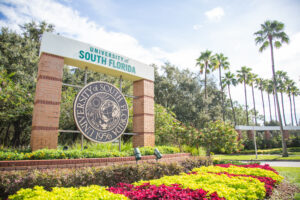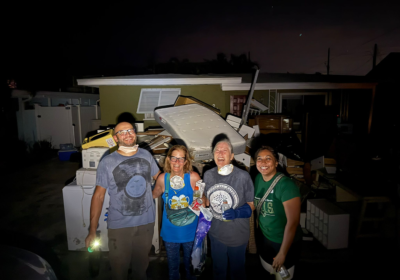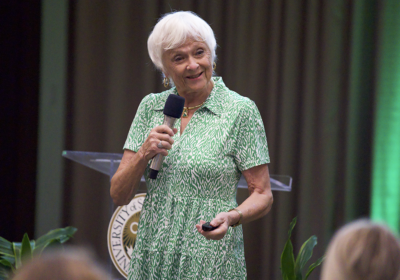Tight A&S budget expected for 2022-23

Some departments and student organizations may see budget cuts for the 2022-23 fiscal period and years to come, as the Activity and Service (A&S) budget is expected to tighten due to limited rollover money and the increasing minimum wage.
Students pay A&S fees as part of their tuition to fund the budget, which provides money to departments focused on programming and services for students.
The Campus Allocation Funding Committee (CAFC) is in the process of reviewing budget presentations for the upcoming fiscal year from A&S-funded departments and organizations.
The committee listens to presentations every Friday, with the last ones being Feb. 4. Since CAFC anticipates a lower A&S budget this year, it asked departments to rank the line items in their budgets as a precautionary measure. In case cuts need to be made, the least preferred item would be cut, Student Government (SG) Deputy Financial Officer and CAFC Chair Nithin Palyam said.
“We’re going to be evaluating each budget for all the departments … and then we’re going to be recommending allocation and then when we receive the final numbers, if there is more money than what we allocated, we’re going to go ahead and see if there are any new requests, new initiatives that the departments are trying to implement on campus,” Palyam said.
There are 12 A&S-funded departments, including the Center for Leadership and Civic Engagement, Center for Student Involvement (CSI), Office of Multicultural Affairs, New Student Connection, Marshall Student Center, Campus Recreation, Students with Disability Services, Student Publications and SG, Advising, Training and Operations.
Tampa Governor and CAFC Vice Chair Alexis Roberson said the committee’s priority is the student experience. A&S fees go straight to benefiting students, she said, so CAFC will protect programming and services and will base its decisions on the level of usage of each item over the years.
Vice President of Student Affairs and Student Success Paul Dosal said, given the constraints on the budget, CAFC will need to focus on items that are in the most demand by students and departments’ most impactful programming.
“I can see all sorts of possibilities that the students are going to have to grapple with as they go through the budget allocation process and determine priorities, but the range of impacts could include less funding for student organizations, less programming, less support for students,” he said.
“All those are very real possibilities if the students have to engage in a cost cutting exercise.”
However, since the final budget amount hasn’t been determined yet, Roberson said there is still the possibility of no cuts being needed in some departments.
CAFC will not receive the 2022-23 budget until about April, according to Palyam. It is not known until the university has the enrollment numbers for the upcoming academic year.
Once the amount of A&S fees the university will collect is determined, CAFC will use the estimated budget to finalize how it will be allocated. Until then, the committee only makes recommendations to the budgets. No decisions or cuts are finalized until the end of the semester.
“The final fiscal bill with all the departments and all the organizations won’t be coming out until the end of April because … if the number changes, we have to go back and reallocate some of the money or deallocate,” Palyam said.
For the 2021-22 academic year, $18.6 million in A&S were allocated to the Tampa campus. This was a slight decrease from the $18.8 million in the 2020-21 fiscal year.
However, Palyam said the budget was usually about $17 million in pre-pandemic years, such as in 2019-20, and it could return to that amount next year.
The budget increased from the $17 million range to surpassing $18 million due to departments not using all their money during the pandemic and it rolled over to the next fiscal year, Palyam said.
Since the A&S budget is funded by students, its final total is based on enrollment numbers.
There are about 36,854 undergraduate students enrolled for the 2021-22 academic year, according to the 2021-22 USF Fact Book. The number of students per campus was not provided by the time of publication.
The last time the yearly USF Fact Book indicated how many students were enrolled per campus was for the 2019-20 year, before USF became one consolidated university.
In 2019-20, there were a total of 37,350 undergraduate students across all campuses. Tampa had 31,823, St. Pete 3,818 and Sarasota-Manatee 1,709, according to the 2019-20 USF Fact Book.
Across campuses, students pay a $7 flat A&S fee each semester, but the amount per credit hour varies by campus.
For the 2021-22 year, Tampa campus students paid $12.08 in A&S fees per credit hour, St. Pete $26.88 and Sarasota-Manatee $25.54, according to the Board of Governors (BOG) 2021-22 fee schedule.
St. Pete and Sarasota-Manatee have the highest fee rates in the state. UF, which has over 57,000 students, has the next highest A&S fee at $19.06.
The Tampa campus hasn’t seen an increase in the A&S fee since 2013 when it was raised from $11.71, according to the BOG local fee history. However, the St. Pete and Sarasota-Manatee campuses saw an increase the same year the three campuses consolidated.
Both campuses increased to their current rates in the 2020-21 fiscal year, according to the BOG 2019-20 fee schedule. Before, St. Pete students were paying $25.63 per credit hour and Sarasota-Manatee students were paying $20.19.
While a fee increase for Tampa would ultimately enlarge the budget and resolve allocation constraints, Dosal said it is unlikely to happen in the coming years as it needs to be approved by the BOG.
“All of my units are tightening their belts,” he said. “We have to, for a number of different reasons.
“COVID has had an impact on all of us. Demand for services has increased. But the fees and tuition have not increased. That alone requires us to be a little more efficient in how we manage the budget.”
Payroll money for student employees that work for A&S-funded departments also comes out of the budget. With the $1 yearly increase in minimum wage until it reaches $15 in 2026, Palyam said departmental budgets may need to reallocate some money to payroll to protect student jobs.
“With the consistent amount of A&S fees coming in, we don’t have any more money to accommodate that particular wage increase,” he said. “We are preparing for the coming years and how it will look like and that is one of the challenges that we are seriously working on.”
There are about 800 student employees, according to Palyam, many who earn minimum wage, which will increase to $11 in September.
Some departments are heavily programming-based, such as CSI, so they have a larger budget for it than others. Those will be able to move money into payroll more easily than service-based departments who don’t have a large programming budget, according to Palyam.
“They might reduce a little bit of programming money, but a lot of departments usually spend around 95% of their total budget,” he said.
“With the minimum wage increase, we are looking at that 95% to go up to 98 or 96, 99%. There won’t be a lot of rollover for next year, but they do have enough money for now within their budget to accommodate the minimum wage increase.”
Dosal said each year will be more challenging than the last as the minimum wage continues to increase and more budget cuts need to be made.
“The reality is, moving forward and into the next few years we are going to have to adjust even more,” Dosal said. “There’s no way to meet those wage increases without taking money from other places unless there happens to be some kind of increase in A&S revenues, either through enrollment increases or fee increases, the latter of which I don’t think is feasible in the next year or two.”
Student jobs on campus are deemed critical to Dosal since many departments depend on student employees, such as Recreation and Wellness.
“It’s a great service and program for our students, students who work there, students who take advantage of the services we offer there, and that’s a great value to the students,” he said.
“I like to think though, that everyone understands that we place a great value on student engagement and student participation in organizations and activities on campus and we still want to be promoted and have a more active student life on all of our campuses.”
Palyam also believes student employees are important for the campus culture, and he said CAFC is prioritizing protecting student jobs on campus.
However, in the upcoming SG election, changes to Article III Section II of the Constitution of the Student Body will be on the ballot, according to a Jan. 31 Oracle article. This would cut the legal SG Senate population from 60 to 40 seats. The loss of 20 senators would be compensated through the work of each campus’ current Campus Council, he said.
SG Director Gary Manka said the increase in minimum wage will make it difficult for SG to be able to pay 60 senators. Overall, SG has about 200 student employees, Palyam said.
Deciding how to allocate the budget is a long, in-depth process, according to Roberson. She said CAFC will maximize the use of the money the university has to support students.
“It’s one that requires people paying attention and just people understanding where Student Government’s coming from and what our priorities are. Then in addition, where the departments are coming from and their priorities,” she said.
“We’re still in the midst of the pandemic and there’s not really a timeline of when we will get out of it. And a pandemic financially impacts everything around it. So of course, it’s financially impacted our university. We’ve been working to make the best decisions that we can with however much money we have.”






